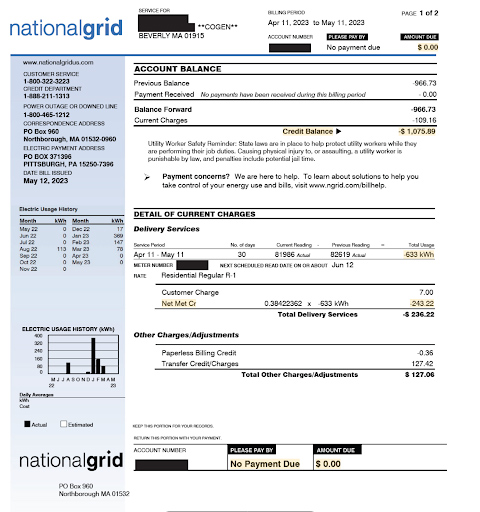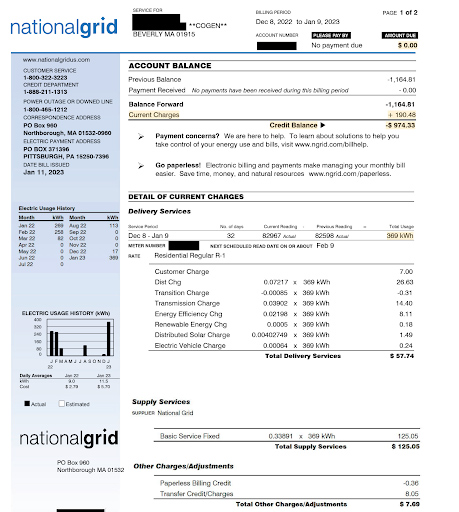 How solar panels work can be a complicated topic. Thankfully, we’ve covered the ins and outs of how solar panels work in our article titled, Understanding Solar Energy: A Kid’s Guide To How Solar Panels Work. One of the biggest things to take away from that article is that most solar systems are still tied to the grid, so that when solar panels underperform (such as during the winter, nighttime, and generally at darker times), the solar home is still powered through the utility company. That way, you’re never in the dark!
How solar panels work can be a complicated topic. Thankfully, we’ve covered the ins and outs of how solar panels work in our article titled, Understanding Solar Energy: A Kid’s Guide To How Solar Panels Work. One of the biggest things to take away from that article is that most solar systems are still tied to the grid, so that when solar panels underperform (such as during the winter, nighttime, and generally at darker times), the solar home is still powered through the utility company. That way, you’re never in the dark!
Your Home Pulls Energy From Your Solar Panels Before Pulling From the Grid
When you have solar panels and you’re still connected to the grid (which is the case for all of our customers), your house pulls electricity from your solar panel system before your home pulls energy from the grid. That is the way installers connect your solar system to your home and the grid. When you get billed for using electricity from your utility company, that generally means that you used more electricity than what your solar panels produced that month.
According to our Support Specialist, Deta, Solaris gets phone calls every so often from customers asking why their solar panels didn’t work that month since they got an electric bill from their utility company. Deta explains to each customer who asks about this that their solar panels were, in fact, working just fine but the customer used more power than what their solar panels produced.
For example, if you get an electric bill from your utility company for using 200 kilowatts (kW) of power, and we state in your solar proposal that your system will produce 500 kW of power that month, then that means you used around 700 kW of electricity that month in total. So, getting an electric bill from your utility company does not usually mean that you didn’t use energy from your solar panels or that your panels are broken. In fact, it means that your home used more electricity than what your solar panels could generate, so your grid-connected home automatically received the extra power needed from the utility company.
What It Means To Get An Electric Bill After Getting Solar Panels
Did you go solar and still have an electric bill? Well, you will always have an “electric bill”, even after going solar, but don’t fret because you won’t always owe something (if ever at all). After you go solar, your electric “bill” is more of a statement of how much electricity you consumed above what your solar panels produced. When you have solar panels in New England, you also have a net meter that is installed after your solar panels are installed. A net meter spins backwards and forwards with how much energy you’re generating (backwards) and how much you’re consuming (forwards). You’ll be billed by your utility company based on the number that’s read on your net meter at the end of your billing cycle.
But remember, just because you have solar panels does not mean that you will have a $0 electric bill from your electric company. As we described above, if your home used more power than what your solar panels create, then you will get an electric bill. That is one reason why we advise customers to size-up their solar system to meet future needs and not just current needs. Also, in addition to the electricity you use, there are mandatory fees on your electric bill for simply being connected to the grid. You can net meter these fees off your bill, though.
When your solar system is sized correctly, your “bill” is usually $0, or even -$250 (or something like that) if you accrued credits from net metering. In the case of a negative electric bill or a $0 bill, you don’t need to pay anything to your utility company since no money is due.
If you need help reading or understanding your electric bill (with or without solar panels), we’re happy to review your electric bill, and provide some education and guidance on how to lower your bill. Deta is available to read and analyze your electric bill and explain any and all charges you’ve accrued.
About Our Cutting-edge Solar Proposals
Our solar assessment is among the most educational and comprehensive in the solar industry. During your first assessment (usually done virtually), we analyze your site for shade, azimuth, roof tilt, and other site factors that help determine how well solar would work for you. We call this your “site’s science.” We also thoroughly go over all local, state, and federal solar incentives available to you in your area. Because of this, our solar assessments and proposals (done through Aurora) are completely customized to each person or household.
Because of factors we mentioned before like wintertime, nighttime, and inclement weather, we know that your solar panels won’t receive optimal sunlight exposure all the time. However, we use the most powerful residential solar panels on the market when building our solar systems. These panels include Maxeon, Certainteed, and others that produce a lot of electricity even on cloudier days or in shaded conditions. In each proposal that Solaris Renewables creates, we factor in New England weather and climate, nighttime, shorter winter daylight hours, cloudy days, and more into our annual energy calculations. We are so confident in our annual energy calculations and the products we offer that we guarantee our estimates to all of our customers. If we say you should produce 300 kW of power in April with your chosen system size and panels, then you should produce around 300 kW of power in April, minus any minimal degradation over time.
As long as your rooftop or yard allows it, we will design a solar panel system that meets or even exceeds your energy needs.
We Recommend Sizing Up Your Solar System For Future Energy Needs
Because of our cutting-edge proposals, our estimated solar production values are typically extremely accurate, and you typically won’t produce more energy than what we say you will. We recommend future-proofing your home by building a slightly bigger solar system to accommodate any increase in your electricity consumption over time if you add an electric vehicle, pool or pool pumps, hot tub, ductless mini splits, or another household upgrade that uses lots of power. When your home’s energy needs change, your home will start using more electricity from the grid to cover what your solar panels do not. Similarly, if you or your partner begin working from home, your home energy use will increase. For this reason, we recommend planning for the future when designing your solar system so there are no surprise bills from your utility company (that you actually have to pay) if your energy use increases.
Although, in most cases, we advise to customers to size-up their solar system for the future, some choose not to. Deta talks with a lot of our customers who wish they opted for a larger solar system at the time of project planning.
Sometimes I get calls from customers who asking us to add more solar panels to their system because their electric usage increased a lot. Homeowners who have the space should always build a bigger system that produces more power than what they need now to prepare for the future. If they don’t end up using the extra power, they can usually net meter it in exchange for credits on their electric bill, so they’d probably never pay an electric bill even in the winter.Deta Boualaphanh
Conclusion
We hope this guide on how solar panels work with the grid in providing power to your home was helpful to you. If you are looking for a free, personalized proposal for solar for your home, please reach out to us by filling out the form below. If you need further assistance understanding your energy bill after going solar with Solaris Renewables, please give our team a call at 781-270-6555.
Go Solar With A Trusted Installer
Interested in learning more about how solar panels would work for you? Our team can answer any question you have about going green, reading your electric bill, and more. We are your local experts in the solar energy industry!

